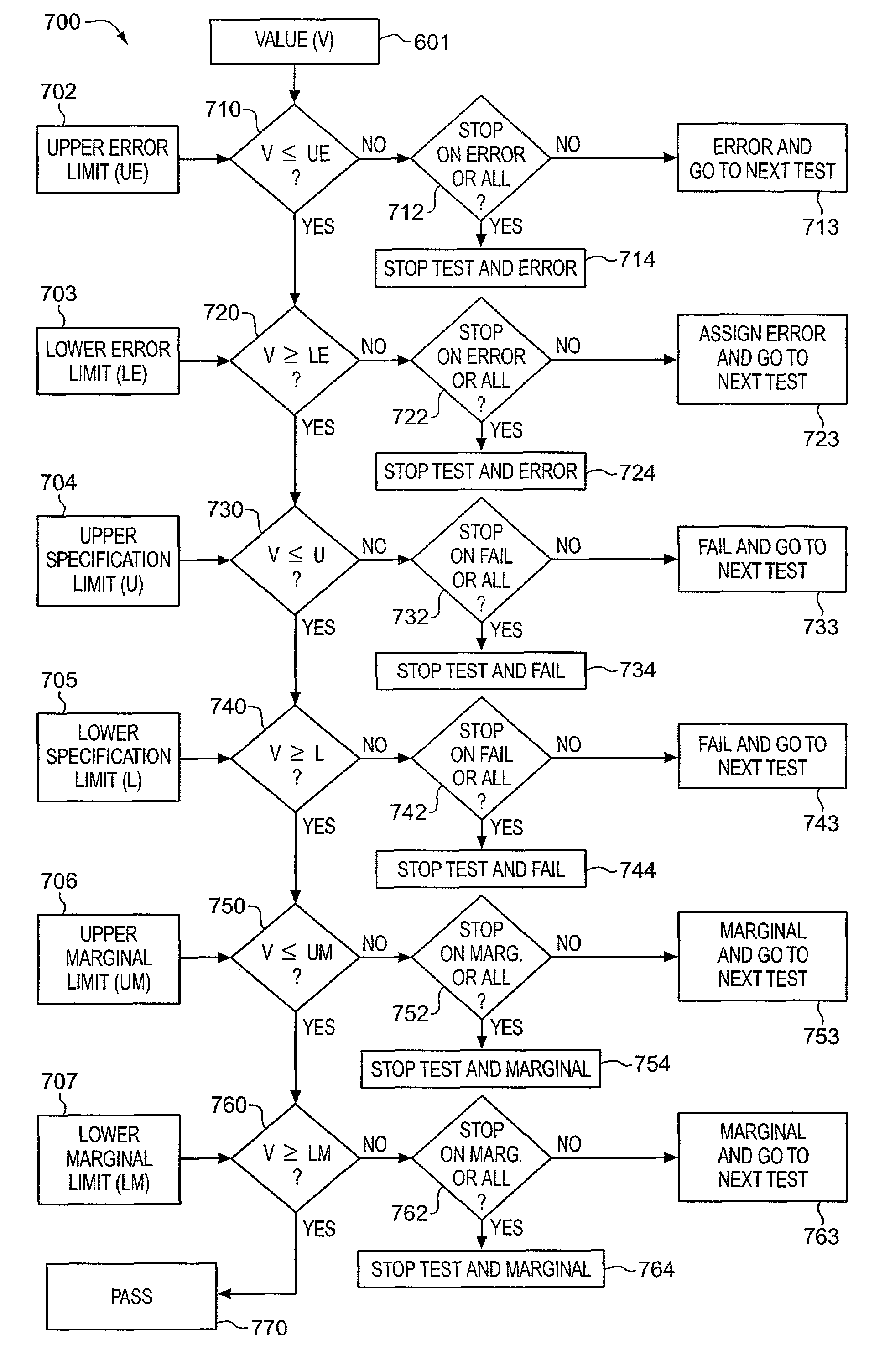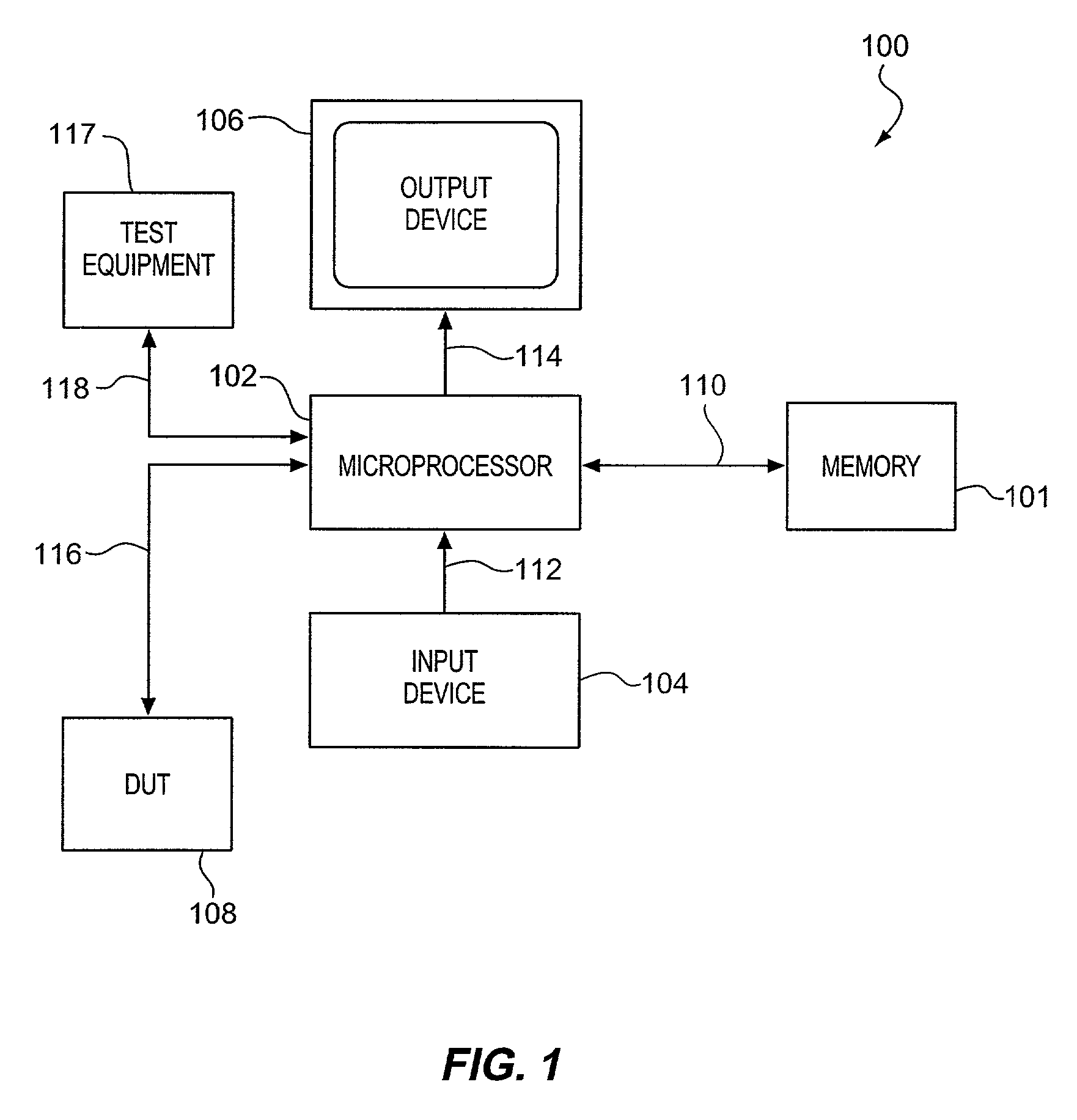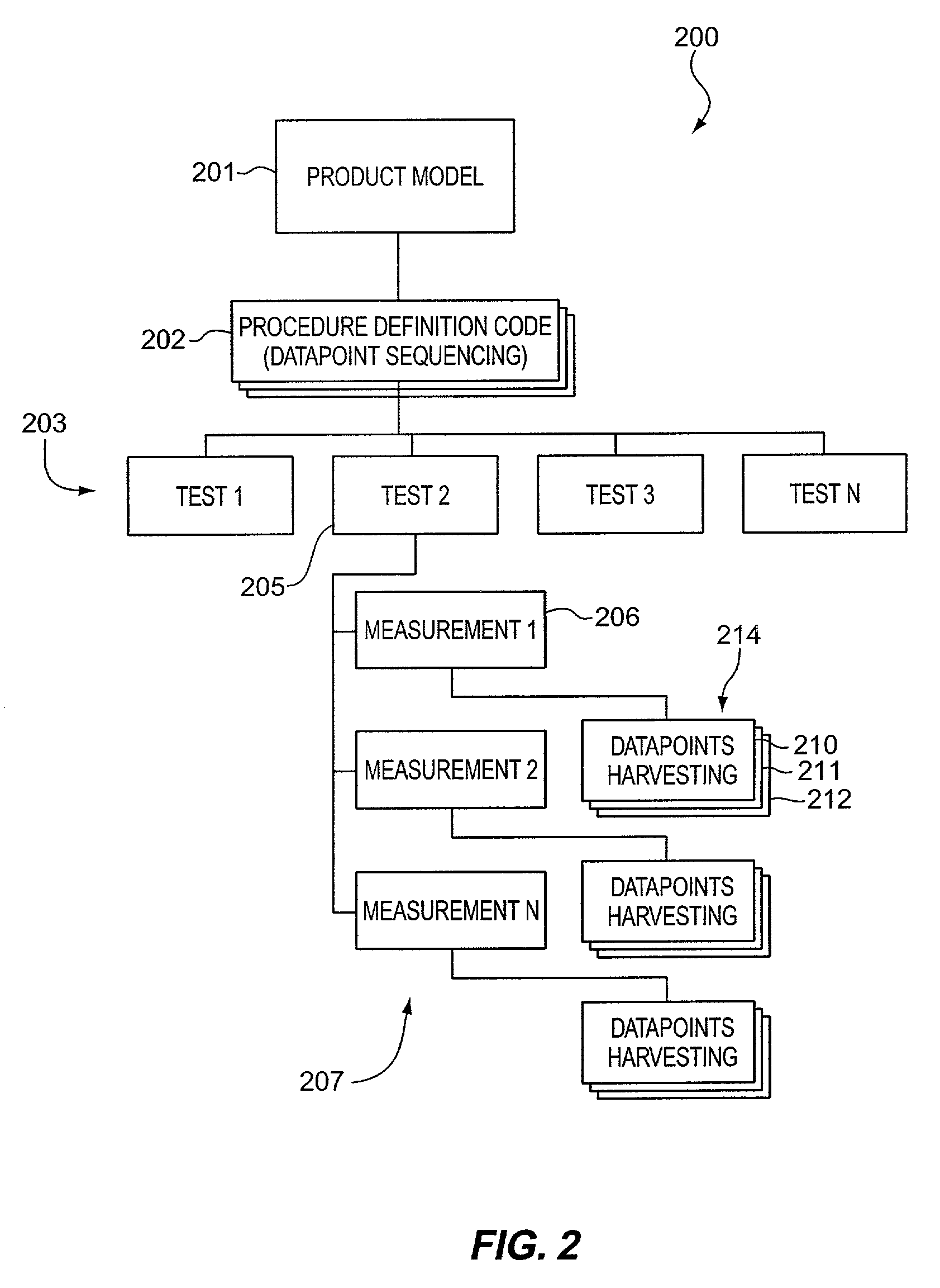Electronic test program that can distinguish results
a test program and electronic technology, applied in the field of electronic test programs, can solve the problems of limiting the ability of the program to display large amounts of data in a simple fashion, long and complex electronic test programs, and complicated setup of connections to the dut,
- Summary
- Abstract
- Description
- Claims
- Application Information
AI Technical Summary
Benefits of technology
Problems solved by technology
Method used
Image
Examples
Embodiment Construction
[0026]The present invention relates to an electronic test system that is able to distinguish erroneous and marginal test results from passed and failed test results, and to display alerts to the user when those results occur. In particular, the present invention is further capable of providing alerts that correspond to the test results such that a user may be alerted to a failure or marginal result in the device under test (DUT), which may be indicative of an inferior device, and such that the user may also be alerted to erroneous results in the device being tested, which may be indicative of a failure or mistake in the testing system rather than an inferior device.
[0027]Referring to FIG. 1, in the embodiment of the test system shown in the figures, the test system preferably comprises a computer system 100, including software. Computer system 100 includes a memory 101, a microprocessor 102, an input device 104, and an output device 106. Memory 101 communicates with microprocessor 1...
PUM
 Login to View More
Login to View More Abstract
Description
Claims
Application Information
 Login to View More
Login to View More - R&D
- Intellectual Property
- Life Sciences
- Materials
- Tech Scout
- Unparalleled Data Quality
- Higher Quality Content
- 60% Fewer Hallucinations
Browse by: Latest US Patents, China's latest patents, Technical Efficacy Thesaurus, Application Domain, Technology Topic, Popular Technical Reports.
© 2025 PatSnap. All rights reserved.Legal|Privacy policy|Modern Slavery Act Transparency Statement|Sitemap|About US| Contact US: help@patsnap.com



